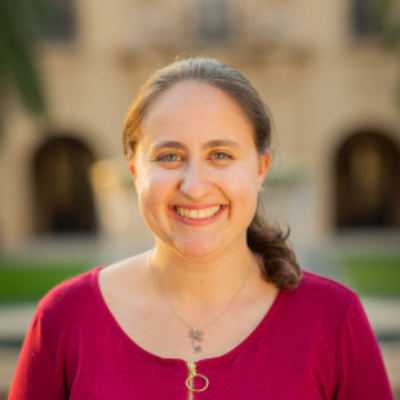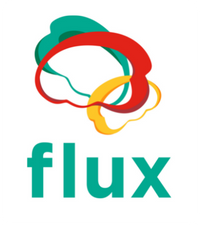The Flux Society extends an enthusiastic congratulations to Dr. Bea Luna, this year’s winner of the Huttenlocher Award, which celebrates an outstanding researcher in developmental cognitive neuroscience who inspires future generations of researchers. As anyone who has met Bea can attest, there is no one more deserving of this honor. Here, we highlight Bea’s extraordinary path to success and her advice for aspiring scientists!
“I was kind of a crazy teenager,” Bea chuckled, now a world-renowned expert in studying the adolescent brain. During her teenage years, Bea recalls being very aware of her own adolescence as a unique period of time for gaining new experiences. She noticed the newly gained executive control and it being driven by her curiosity, that led to increased sensation seeking and yes, risk taking. From an early age, Bea was fascinated with the philosophical idea of trying to understand the human mind and was blown away by the idea of actually imaging the human brain in action to understand the mind scientifically. As Bea put it, “the concept of mind was so important to me.” Inspired by philosophers like Edmund Husserl, she felt empowered by the idea that “rigorous scientific inquiry is something that can really bring us truth, even about things as ephemeral as the mind.”
After getting kicked out of high school for skipping classes and getting into “all sorts of trouble,” Bea re-committed to getting good grades. She recalls fondly the support of a teacher who believed in her and who said to her “Bea, you are really bright, you’re going to be fine.” Determined to get into college, Bea turned her grades around and upon starting at American University she discovered that she absolutely loved learning. As her adolescent rambunctiousness transformed into an energetic passion for science, her curiosity about the mind continued to grow. She recalls her own transformation “from crazy party teenager to complete geek in college” and says that instead of going to college parties (“I did all that already!”), her life began to revolve around eagerly asking questions from the first row of her classes, hanging out with professors outside of class, and working in a rodent psychopharmacology lab.
Bea describes herself as someone who is terrified of boredom and the status quo, which drives her science to innovative areas. This drive for excitement led her to choose a career path in research. “Doing experiments and asking questions all the time, that perpetuates my idea of fun and not being bored!” she said. Being able to ask the “deep questions that came from my philosophy side scientifically was just amazing to me.” She felt that by becoming a professor, she could “perpetually do what I thought was super fun” and proclaimed to herself in the style of Gone With The Wind, “I will never be bored again!!” Now, having achieved her dream of becoming a professor, Bea literally dreams up scientific ideas, imagining herself “navigating through the sulci” and emailing herself from her phone when she dreams up something exciting enough to wake her from her sleep.
During graduate school, Bea began dating the drummer in a punk rock band (who would later become her husband!). They often stayed out late listening to music and “searching for fun” together. When she woke up early each morning to arrive in the lab at 8am, she reports having “half a brain working” but it was the focused part that really helped her succeed. Rather than letting fear of new approaches stand in the way of her progress, Bea fearlessly pursued the projects she was most excited about regardless and obtained the expertise needed. She says this state of mind “allowed me to focus and not be anxious or distracted. I only had a few neurons working, but that was perfect!” Although the lab she worked in studied development in sensory systems, Bea turned her focus to the brain and understanding high-level cognitive processes. Led by her dissertation work that she says, “showed that plasticity in development was not reflected in the integrity of the structural brain and that integrity of brain function was key,”. This led her to do a post-doc in a psychiatry lab led by John Sweeney that used fMRI to study schizophrenia and autism.
Reflecting on the “critical periods” in her career development, Bea shared a few key moments that shaped her life’s work as a developmental cognitive neuroscientist. When she began her post-doc, she took what others had said was the “logical next step” for her work in adolescents: since adolescence is a period of heightened developmental plasticity but also of heightened vulnerability to psychiatric illness, psychopathology seemed the next logical research topic. However, the feedback on her first grant submission was riddled with doubt and she realized that she too felt doubt, thinking, “yeah, I don’t believe in it either.” She realized that the field wasn’t yet prepared to interrogate adolescent psychopathology before getting a better grasp on normative adolescent brain development first. “It was a pivotal moment for me,” she said, “to understand that all the work that we do is so much better when you’re doing what you really want to do and what you believe in, and that translates when you write a grant.” Excited and determined, Bea re-wrote her grant with the proposal that she really believed in instead of focusing on psychopathology. This proposal was deemed too risky and was rejected twice, which led her to much self doubt, but she persisted and was finally successful, and this led to being awarded the Presidential Early Career Award in Science and Engineering!
Bea feels that the best scientific questions are not necessarily the “next logical step” following a previous experiment, but rather the “crazy ideas” and “risky science” that involve thinking outside the box. As her career blossomed, this idea became solidified in her mind, and soon study sections got to know her and accepted her innovative risky thinking, supporting her grants continuously and often on first submission. Nowadays, Bea has gained plenty of “street cred” with her outstanding scientific accomplishments and track-record of pivotal discoveries. Even when her grant applications seem “absolutely crazy,” her fellow leaders in the field now wholeheartedly trust that she will somehow get it done because “well, it’s Bea!”
Two critical scientific discoveries that Bea had while studying adolescents really shaped the path of her scientific career. First, she realized that teenage brains weren’t being given enough credit for their capability of supporting adult levels of cognitive functioning. Even though adolescents tend to perform worse on cognitive tasks than adults on average, they also show much more variability than adults, sometimes reaching comparable levels to adults but inconsistently. This became particularly evident when she was asked to contribute to AMA briefs to the US Supreme Court for juvenile life without parole. It became evident that the crimes committed often involved adult levels of planning and cognition, but these abilities were being driven by short term rewards and emotion. Indeed, her work has shown striking evidence that executive brain regions are engaged at adult levels by adolescence but are prone to effects of rewards leading to her provocative ‘Driven Dual Systems Model.’ This model underscores the uniqueness of adolescence as a period when adult levels of executive function are available and individuals are driven by the motivation to gain new experiences – an adaptive process that is needed to specialize brain systems.
Bea also says that as a field, we need to “stop thinking of the adolescent brain as not having a prefrontal cortex or not having the ability to support executive function…it’s really about being able to engage it in a stable manner, which comes when trajectories become established” – this realization led Bea to discover numerous factors that underlie the stability rather than the ability of prefrontal cortical functions that support the transition into adulthood. Second, she realized that although most people in the field talked about development as if it was a linear process increasing steadily from childhood to adulthood, many aspects of neurodevelopment actually appear nonlinear, often showing a period of accelerated growth in childhood, an elbow at adolescence, and then stability in adulthood as brain systems become more specialized. This critical realization and Bea’s brilliant research on this topic has profoundly shaped the way the field thinks about (and mathematically models!) adolescent development.
When asked about the future of developmental cognitive neuroscience, Bea shared a few key ideas. In addition to supporting calls for more large-scale longitudinal studies, more mechanistically-grounded research, and a greater focus on environmental factors that shape brain development, Bea also says “let’s become more collaborative!” and “let’s have more risky science!” To trainees and future scientists in the field, she reminds us that “This career can become stressful and that can make it hard to think. Control that stress by making it FUN!” Writing grants can be scary and many people find it dreadful, but when you write about projects you really find emotionally exciting it gets easier. She also recalls what it took to overcome her fear of public speaking, an essential part of being a successful scientist. Although it’s hard to believe nowadays while watching Bea confidently command the stage at Flux meetings and karaoke nights, she says she was always extremely shy as a child and even remembers losing her voice on stage. “It was torture to give talks in grad school,” she said, and trying to memorize her talks didn’t help. Eventually, during her post-doc, someone told her bluntly that “no one is here to judge you, they just want to hear what you’re doing.” Letting go of the fear of judgment and letting the excitement of sharing her discoveries lead allows Bea to have fun and to focus on what she loves the most – her outstanding science!
This interview was conducted by Arielle Keller and the Flux Communication Committee team.
Author

Arielle S Keller, PhD
Post-Doctoral Fellow, University of Pennsylvania
